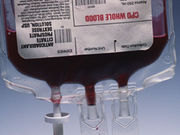No significant difference seen in patient survival rates
TUESDAY, Oct. 25, 2016 (HealthDay News) — Using the freshest blood for transfusions does not appear to significantly improve patient survival, according to a study published online Oct. 24 in the New England Journal of Medicine.
Nancy Heddle, a professor emeritus of medicine at McMaster University in Hamilton, Canada, and colleagues examined data from 31,497 patients who received blood transfusions at six hospitals in the United States, Canada, Israel, and Australia.
In a primary analysis involving 20,858 patients with type A or O blood, the researchers noted 634 deaths (9.1 percent) in the short-term storage group and 1,213 (8.7 percent) in the long-term storage group (odds ratio, 1.05; 95 percent confidence interval [CI], 0.95 to 1.16; P = 0.34). The team expanded the analysis to include the 24,736 patients with any blood type, and found the results to be similar: 9.1 and 8.8 percent, respectively (odds ratio, 1.04; 95 percent CI, 0.95 to 1.14; P = 0.38).
“Among patients in a general hospital population, there was no significant difference in the rate of death among those who underwent transfusion with the freshest available blood and those who underwent transfusion according to the standard practice of transfusing the oldest available blood,” the authors write.
Abstract
Full Text (subscription or payment may be required)
Editorial (subscription or payment may be required)
Copyright © 2016 HealthDay. All rights reserved.








